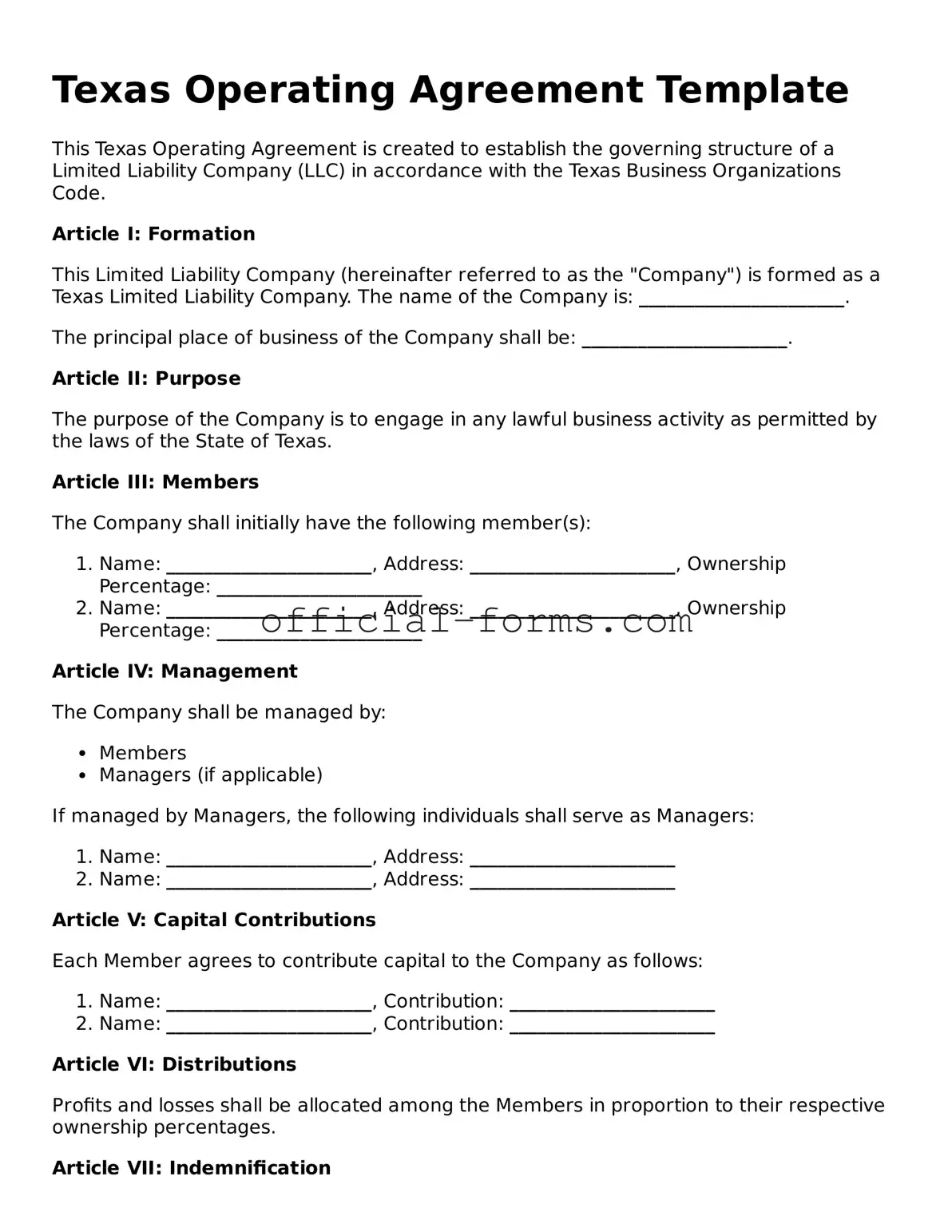When completing the Texas Operating Agreement form, individuals often overlook key details that can lead to complications down the road. One common mistake is failing to clearly define the roles and responsibilities of each member. Without this clarity, misunderstandings may arise, potentially resulting in disputes that could have been avoided with precise language.
Another frequent error is neglecting to specify the management structure of the business. Some individuals assume that everyone understands how decisions will be made, but this assumption can lead to confusion. It is essential to outline whether the business will be member-managed or manager-managed, as this distinction impacts how day-to-day operations are conducted.
Many people also forget to include provisions for profit and loss distribution. The Operating Agreement should detail how profits and losses will be allocated among members. Without this information, members may have differing expectations, which can create tension and dissatisfaction within the partnership.
Additionally, individuals sometimes fail to account for the procedures surrounding the addition or removal of members. It is crucial to establish a clear process for these changes to ensure that all parties are aware of their rights and obligations. Without such provisions, the business may face challenges if a member wishes to exit or if new members want to join.
Another common mistake is overlooking the importance of addressing dispute resolution. Members should agree on how disputes will be handled, whether through mediation, arbitration, or another method. This foresight can save time, money, and relationships in the long run.
Furthermore, some individuals do not update their Operating Agreement as the business evolves. Changes in membership, business structure, or operational strategies necessitate revisions to the agreement. Failing to keep the document current can lead to confusion and potential legal issues.
Lastly, many people underestimate the value of consulting with a legal professional when drafting their Operating Agreement. While it may seem like a straightforward task, the nuances of business law can be complex. Seeking expert advice ensures that the agreement is comprehensive and tailored to the specific needs of the business.
